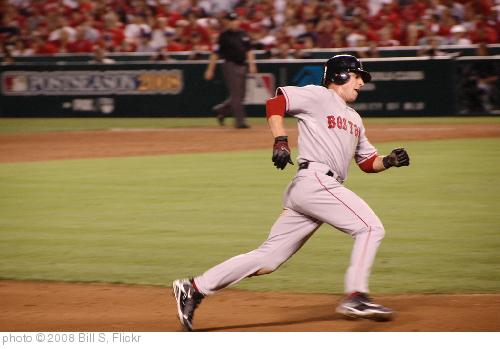Score on a ground ball
October 3, 2013 by Coach McCreary
Filed under Base Running
When you watch a young team play there are many things that you can point to as examples of good coaching. The common feature that all seem to share is that well coached behaviors don’t come about naturally. For example, individuals
tend to create a sense of fashion that is unique in some way to themselves. They may not wear something that will make them stand out like a clown but they don’t wear exactly the same thing as everyone else either. When it comes to uniforms, a well coached team does, in fact, wear their uniform EXACTLY like everyone else on the team. Thus the term “UNI-form,” meaning “one way.”
Another example of a well-coached behavior is how runners on second base respond to a ball put into play on the ground with two outs. The natural tendency is to run to third base and watch the play develop at first base as you go. A well coached baserunner doesn’t bother watching the play develop. Is his mind, he is scoring! He treats the two-out infield ground ball as if it is a base hit. If the play at first base is called safe, the runner from second base often has a good chance of scoring. This is not just because of the timing of the play but because first basemen will frequently get caught napping and not think to throw home immediately after catching the ball. They usually hesitate to wait for the umpire to call safe or out. That hesitation allow many runners to score after a safe call.
To get all your baserunners to think this way takes an explanation and drill work initiated by the coach. It may come naturally to one or two baserunners but certainly not all of them. It must be taught.
Note:
- Certain situations may call for runners to be less aggressive around third base. Down by a lot of runs would be an example. A ground ball in the hole for the shortstop is another. He may not throw to first. He may just try to get the runner rounding third.
- A one-out, potentioal double play ground ball is another example of when a runner at second base can be similarly aggressive. If the double play is not successful, often the runner from second can score.
Tomorrow’s Post: Stages of a ball player






Leave a Reply